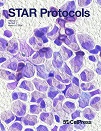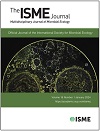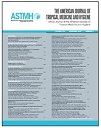Latest Publications
Manipulating multi-level selection in a fungal entomopathogen reveals social conflicts and a method for improving biocontrol traits
 Zoltan Erdos, David J. Studholme, Manmohan D. Sharma, David Chandler, Chris Bass, Ben Raymond
Zoltan Erdos, David J. Studholme, Manmohan D. Sharma, David Chandler, Chris Bass, Ben Raymond
Changes in parasite virulence are commonly expected to lead to trade-offs in other life history traits that can affect fitness. Understanding these trade-offs is particularly important if we want to manipulate the virulence of microbial biological control agents. We hypothesized that manipulating selection intensity at different scales would reveal virulence trade-offs in a fungal pathogen of aphids, Akanthomyces muscarius. Starting with a genetically diverse stock we selected for speed of kill, parasite yield or infectivity by manipulating competition within and between hosts and between-populations of hosts over 7 rounds of infection. We found that early sporulation led to reduced competitive fitness but could increase yield of spores on media, a trade-off characteristic of social conflict. Notably, the selection regime with strongest between-population competition and lowest genetic diversity produced the most consistent shift to early sporulation, as predicted by social evolution theory. Multi-level selection therefore revealed social interactions novel to fungi and showed that these biocontrol agents have the genomic flexibility to improve multiple traits—virulence and spore production—that are often in conflict in other parasites.
Detection of membrane fission in single Bacillus subtilis cells during endospore formation with high temporal resolution
 Ane Landajuela, Martha Braun, Christopher D.A. Rodrigues, Erdem Karatekin
Ane Landajuela, Martha Braun, Christopher D.A. Rodrigues, Erdem Karatekin
Membrane fission is an essential process in all domains of life. The underlying mechanisms remain poorly understood in bacteria, partly because suitable assays are lacking. Here, we describe an assay to detect membrane fission during endospore formation in single Bacillus subtilis cells with a temporal resolution of ∼1 min. Other cellular processes can be quantified and temporally aligned to the membrane fission event in individual cells, revealing correlations and causal relationships.
Coordinated transcriptional response to environmental stress by a Synechococcus virus
 Branko Rihtman, Alberto Torcello-Requena, Alvetina Mikhaylina, Richard J Puxty, Martha RJ Clokie, Andrew D Millard, David J Scanlan
Branko Rihtman, Alberto Torcello-Requena, Alvetina Mikhaylina, Richard J Puxty, Martha RJ Clokie, Andrew D Millard, David J Scanlan
Phosphorus (P) is a major abiotic control on the marine cyanobacterium Synechococcus. Some viruses infecting Synechococcus have acquired, from their host, a gene encoding a P substrate binding protein (PstS), thought to improve virus replication under phosphate starvation. Yet, pstS is uncommon amongst cyanobacterial viruses. Thus, we asked how infections with viruses lacking PstS are affected by P scarcity. We show that production of infectious virus particles of such viruses is reduced in low P conditions. Our data shows how phage genomes, lacking obvious P-stress related genes, have evolved to exploit their host’s environmental sensing mechanisms to coordinate their own gene expression in response to resource limitation.
Postintervention Immunological and Entomological Survey of Lymphatic Filariasis in the City of Olinda, Brazil, 2015-2016
 Anita Ramesh, Paula Oliveira, Mary Cameron, Priscila M S Castanha, Thomas Walker, Audrey Lenhart, Lucy Impoinvil, Neal Alexander, Zulma Medeiros, André Sá, Abraham Rocha, Wayner V Souza, Amélia Maciel, Cynthia Braga
Anita Ramesh, Paula Oliveira, Mary Cameron, Priscila M S Castanha, Thomas Walker, Audrey Lenhart, Lucy Impoinvil, Neal Alexander, Zulma Medeiros, André Sá, Abraham Rocha, Wayner V Souza, Amélia Maciel, Cynthia Braga
Lymphatic filariasis (LF) is a leading cause of disability due to infectious disease worldwide. The Recife Metropolitan Region (RMR) is the only remaining focus of LF in Brazil, where the parasite Wuchereria bancrofti is transmitted solely by the mosquito Culex quinquefasciatus. This study reports the results of transmission assessment surveys and molecular xenomonitoring in the city of Olinda, RMR, after nearly 15 years (2015-2016) of interventions for LF elimination. Participants were screened for W. bancrofti antigen via immunochromatographic card tests (ICT), and all 1,170 children from MDA areas and the entire population sample of 990 residents in non-MDA areas were ICT negative. In MDA areas, a total of 3,152 female Cx. quinquefasciatus mosquitoes in 277 households were collected via aspiration. RT-qPCR of 233 pools of mosquitos were negative for W. bancrofti RNA; an independent reference laboratory confirmed these results. These results provide evidence that LF transmission has been halted in this setting.
Unveiling the potential of Daldinia eschscholtzii MFLUCC 19-0629 through bioactivity and bioinformatics studies for enhanced sustainable agriculture production
 Brooks S, Weaver JA, Klomchit A, Alharthi SA, Onlamun T, Nurani R, Vong TK, Alberti F and Greco C
Brooks S, Weaver JA, Klomchit A, Alharthi SA, Onlamun T, Nurani R, Vong TK, Alberti F and Greco C
Endophytic fungi constitute a rich source of secondary metabolites that can be manipulated to produce desirable novel analogs for combating current agricultural challenges for crop production, especially controlling plant disease. The endophytic fungus Daldinia eschscholtzii MFLUCC 19-0629, was newly isolated from tropical ancient plants, Oncosperma sp., and displays a broad-spectrum of antifungal and antibacterial activities against several plant pathogens. The discovery that D. eschscholtzii MFLUCC 19-0629 has a broad spectrum of antimicrobial activity against seven major plant pathogenic microorganisms relevant to crop production and its complete genome sequence carries immense importance in the advancement of novel microbial biocontrol agents (MBCAs). This also unveils the prospect of uncovering new compounds that could be utilized for sustainable agriculture and pharmaceutical purposes.
Peptidoglycan synthesis drives a single population of septal cell wall synthases during division in Bacillus subtilis
 Kevin D. Whitley, James Grimshaw, David M. Roberts, Eleni Karinou, Phillip J. Stansfeld & Seamus Holden
Kevin D. Whitley, James Grimshaw, David M. Roberts, Eleni Karinou, Phillip J. Stansfeld & Seamus Holden
Bacterial cell division requires septal peptidoglycan (sPG) synthesis by the divisome complex. Treadmilling of the essential tubulin homologue FtsZ has been implicated in septal constriction, though its precise role remains unclear. Here we used live-cell single-molecule imaging of the divisome transpeptidase PBP2B to investigate sPG synthesis dynamics in Bacillus subtilis. In contrast to previous models, we observed a single population of processively moving PBP2B molecules whose motion is driven by peptidoglycan synthesis and is not associated with FtsZ treadmilling. However, despite the asynchronous motions of PBP2B and FtsZ, a partial dependence of PBP2B processivity on FtsZ treadmilling was observed. Additionally, through single-molecule counting experiments we provide evidence that the divisome synthesis complex is multimeric. Our results support a model for B. subtilis division where a multimeric synthesis complex follows a single track dependent on sPG synthesis whose activity and dynamics are asynchronous with FtsZ treadmilling.
